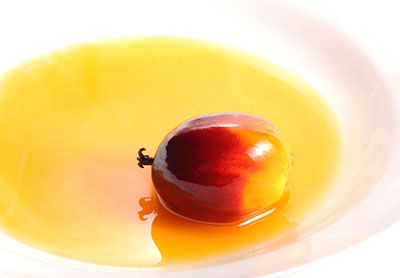
Beta carotene is a large part of the carotenoid family and is found in fruits, vegetables, grains and oil. Most people associate beta carotene with carrots. However, much of the natural beta carotene available comes from palm oil processing. Other sources include Dunaliella salina algae, or Blakeslea trispora fungus. Nature-identical, synthetic beta carotene is sourced from petrochemicals.
As a colorant:
Beta carotene is a good place to start if you’re looking for a yellow-orange color for your food product. In fact, it has been the main colorant of margarines and orange beverages, giving both their classic coloring. This widely-used, work-horse colorant can help you achieve a range of hues based on formula concentration. And with some formulation and process tweaks, you can be successful in maintaining the desired hue over the shelf life of your product.
As a Pro-Vitamin A:
Of the carotenoids, beta carotene is easily converted by the body to retinol (vitamin A), making it a great pro-vitamin A. To define pro-vitamin A on the label, the Codex uses a conversion of 1 µg retinal (Vitamin A) for every 6 µg beta carotene. Beta carotene is also useful in scavenging free radicals as an antioxidant.
Applications & stability:
Beta carotene is lipophilic, meaning it is insoluble in water. As such, in high oil products, like margarine or bakery products, an even color is achieved, because the beta carotene is easily mixed into the oil phase during processing. Beta carotene is also stable through heat processing, like baking.
For non oil-based food systems, like beverages or confectionary, beta carotene is also available in water soluble forms as part of an emulsion (stabilized by polysorbate, monoglycerides and diglycerides, lecithin, or hydrocolloids) or in a dispersion in a carrier like glycerol. For dry applications, beta carotene can be plated on a carrier.
Emulsifiers are key to stabilizing the beta carotene emulsification. And while beta carotene itself is not pH sensitive, changes in pH can disrupt the overall emulsion stability, which can lead to problems of the beta carotene color separating out into oil droplets. In the beverage industry, this separation is often seen as a neck ring. The key is to prevent emulsion failure by examining ingredient interactions, processing steps, and final product attributes.
Oxidation is a concern for beta carotene color. The pigment is quickly lost under oxidation, so anti-oxidants, like ascorbic acid or tocopherols, can reduce the rate of oxidation. Taking measures to prevent oxidation over shelf life by controlling excess heat and light exposure through production, packaging or conditioned shipping can also help to reduce the rate of oxidation. The presence of pro-oxidative metals (either from processing equipment, coming in with other ingredients and/or from the local water source) can also speed oxidation and can be countered with the inclusion of metal sequestering agent like EDTA or citric acid.
Regulatory Information:
A non-polar terpenoid with beta-rings at both ends of a 40 carbon structure, it is mainly permitted as a colorant in food and beverages. In 2012, the EU revisited the safety of beta carotene (E160A) as a food color and determined that at normal usage levels, beta carotene is safe. In the US, relatively pure (95%) beta carotene is permitted as a colorant under 21 CFR 73.95 and 21 CFR166.110 and as a pro-vitamin A nutritional supplement under 21 CFR 182.5245 and 21 CFR 184.1245.
Search for beta carotene in Prospector…
The views, opinions and technical analyses presented here are those of the author or advertiser, and are not necessarily those of ULProspector.com or UL Solutions. The appearance of this content in the UL Prospector Knowledge Center does not constitute an endorsement by UL Solutions or its affiliates.
All content is subject to copyright and may not be reproduced without prior authorization from UL Solutions or the content author.
The content has been made available for informational and educational purposes only. While the editors of this site may verify the accuracy of its content from time to time, we assume no responsibility for errors made by the author, editorial staff or any other contributor.
UL Solutions does not make any representations or warranties with respect to the accuracy, applicability, fitness or completeness of the content. UL Solutions does not warrant the performance, effectiveness or applicability of sites listed or linked to in any content.


